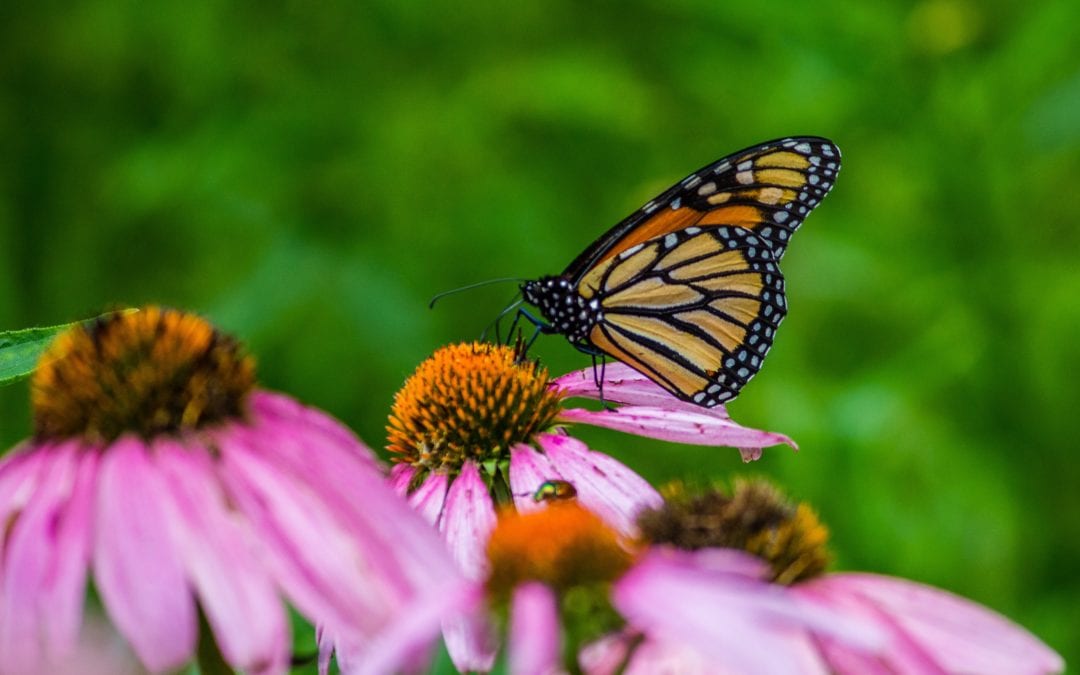When spring arrives, the thought of wildflowers and blooming beauties like purple coneflowers fill the dreamful eyes of many gardeners. They have the urge to load up baskets with packets of seeds and can’t wait to start planting. But more often than not, wildflowers like coneflowers struggle and flail, because they actually should have been planted the previous fall!
Today we are focusing on coneflowers because we have a special treat. We teamed up with Laura Jarvis to get her expert advice for how to start this cheerful native wildflower by seed. Sit back and learn something new as we share this guest post on planting coneflowers from seed that we adapted from Laura’s Facebook post on her site, “The Butterfly Landing” .
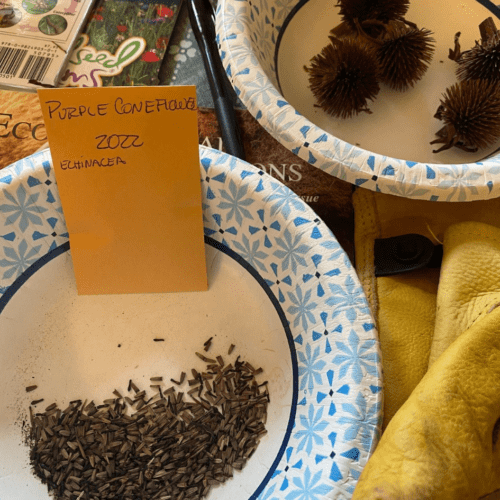

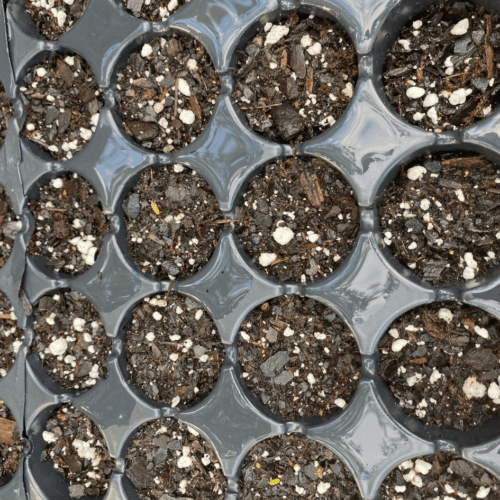
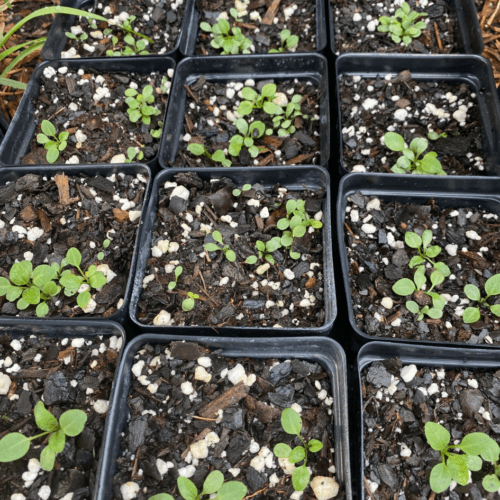
Photo credit: Laura Jarvis, The Butterfly Landing. (See the close up of the seeds? The dark little cylinder is actually the seed but it won’t hurt if the outside sheath is planted as well.)
Easy Steps for Planting Coneflowers from Seed
1. Start seeds at the right time of year: As with most wildflowers, September to December is the best time to start coneflower seeds for flowers in the garden next spring.
2. Purchase your seed pots: It is very easy to start coneflowers in 4″ pots or seed trays. I start them this way because I have more control over the water and care. I also like planting them in specific places in the gardens and starting coneflowers in these smaller pots easily allows for this.
3. Purchase your soil: Fill your seed trays or 4″ pots with a quality potting mix. I like Happy Frog or Ocean Forest by FoxFarm as they are all natural potting mixes and the native seeds do very well in them. NO soils with chemical fertilizers like Miracle Gro; the native plants hate them!
4. Fill pots with soil and pot up seeds: Once you have your pots or trays filled with high quality soil, sprinkle coneflower seeds over the top of the soil like you are lightly salting your food. Press soil down and do not cover the seeds. Covering the seed will smother it.
5. Give seeds part sun and keep moist: Leave the trays in part sun and keep moist until coneflower seeds have germinated. When the seedlings have a second set of leaves growing, start to back off on the water but never let the soil go completely dry or you will lose the seedlings.
6. Thin seedlings: At this point if you have more than one seedling in a plug or 4″ pot, you will need to thin them to one seedling per plug or 4″ pot. (Keep the healthiest and strongest looking seedling and use pointed scissors to cut the other weak seedlings at the soil line. This prevents disturbing the strong seedlings roots.)
7. Plant coneflower seedlings: When the seedling has grown 3 sets of true leaves, and the roots have grown to the bottom of the pots, they are strong enough to be transplanted into the garden or larger containers.
8. Plant in the right light exposure. Find a space in your landscape that gets at least 6 hours of full AM sun, or a combination of a few hours of morning sun, and then filtered sunlight the rest of the day. They just need a little break from all day full sun.
*Coneflowers will grow low and flat to the ground through winter. They are busy growing underground roots and will start to grow leaves and fresh new growth in spring. Flowers will appear in early summer. You are planting now to be rewarded later. Coneflowers can tolerate cold temperatures. Unless we have a really crazy winter, your plants should be fine without winter protection.
Laura’s extra tips about growing coneflowers:
- Seeds sprout better if we are having light rain; they will usually come up in a few days.
- If you use fresh seed you will also have better luck.
- It’s recommended to space coneflower transplants 6-10″ apart. Laura likes to plant her coneflower transplants a little closer together, so she opts for the 6″ spacing. This helps eliminate open soil space where competing weeds can grow, and she gets a full and fabulous display. Just look at the last picture!
- Be patient! The native plants and seeds are on their own time schedule. Light, water, time of year, and temperatures all play a part in how fast they germinate.
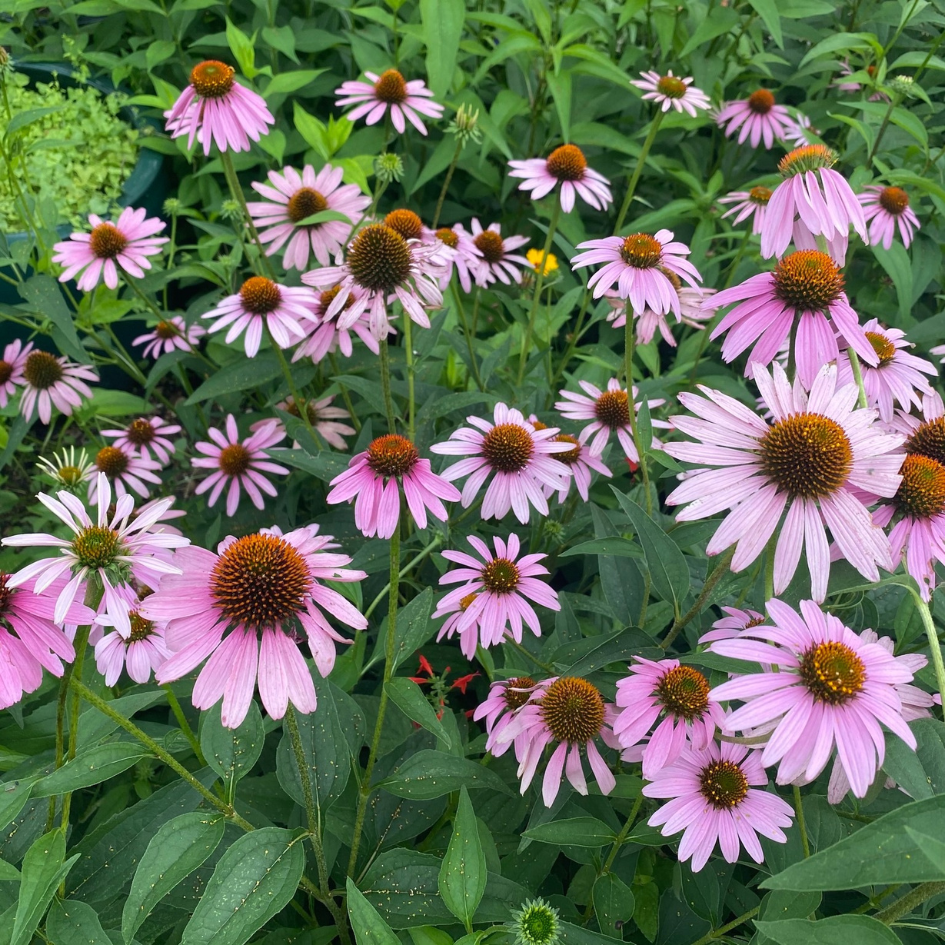
More About Coneflowers
With their vibrant, daisy-like petals radiating in a stunning array of purple, pink, orange, white, and even yellow, coneflowers stand tall and proud in the Texas sunshine. Dark, spiky centers form a striking contrast against the soft, colorful petals of coneflowers, creating a visual feast for onlookers and pollinators alike.
Bees, butterflies, and hummingbirds flock to these cheerful blooms, drawn by their rich nectar and bright hues. In gardens and wildflower meadows, the sturdy stems of coneflowers hold their flowers aloft as if proudly displaying nature’s artwork. Loved by locals for their beauty and by pollinators for their bounty, coneflowers are a true Texas treasure, bringing life and color to the landscape.
We hope you have enjoyed learning how to plant coneflowers from seed and that these easy steps from Laura Jarvis and The Butterfly Landing will have you ready to start some this fall. As Laura always says, “Save The Pollinators, Save The World!”
~The Happy Gardener, Lisa Mulroy

